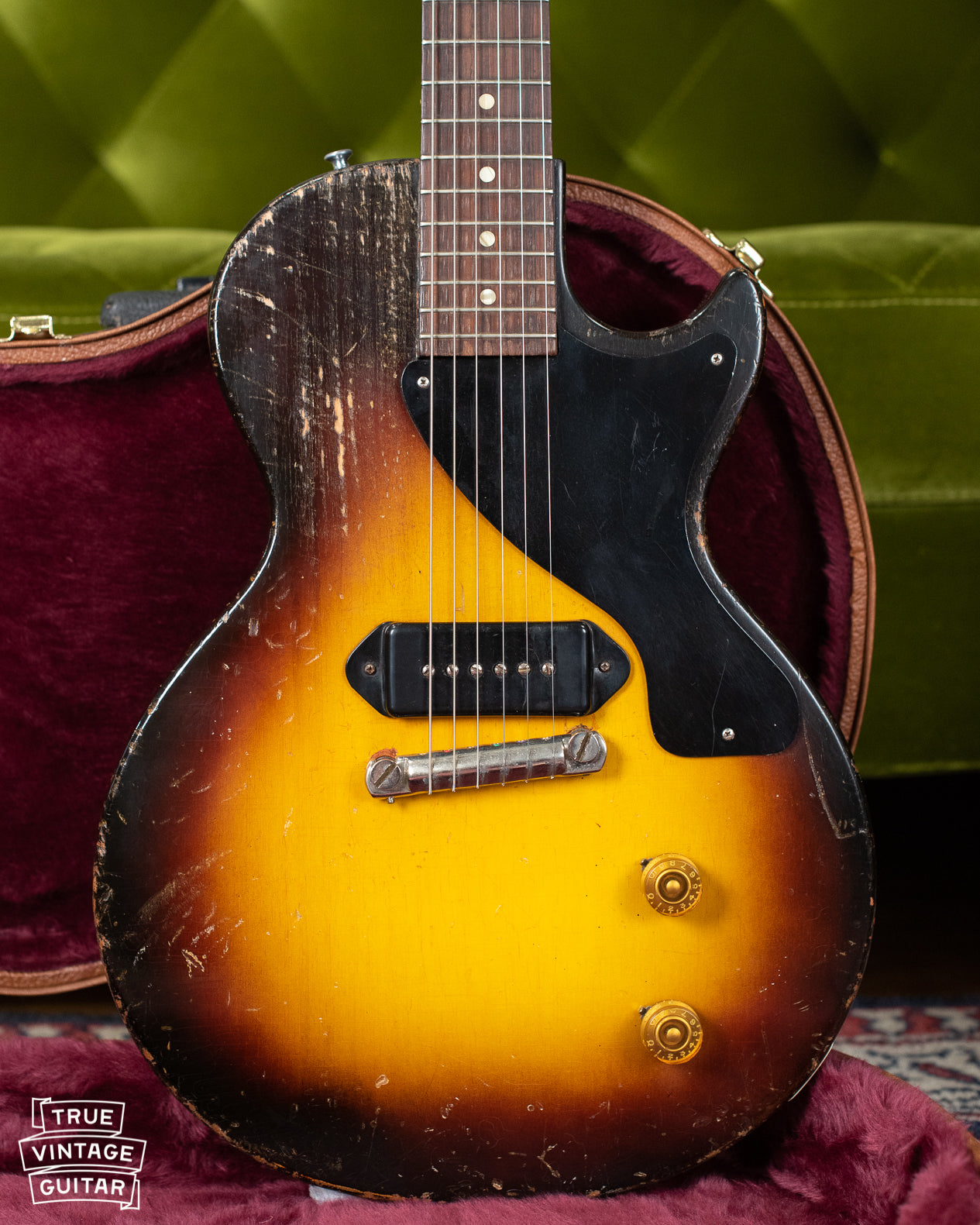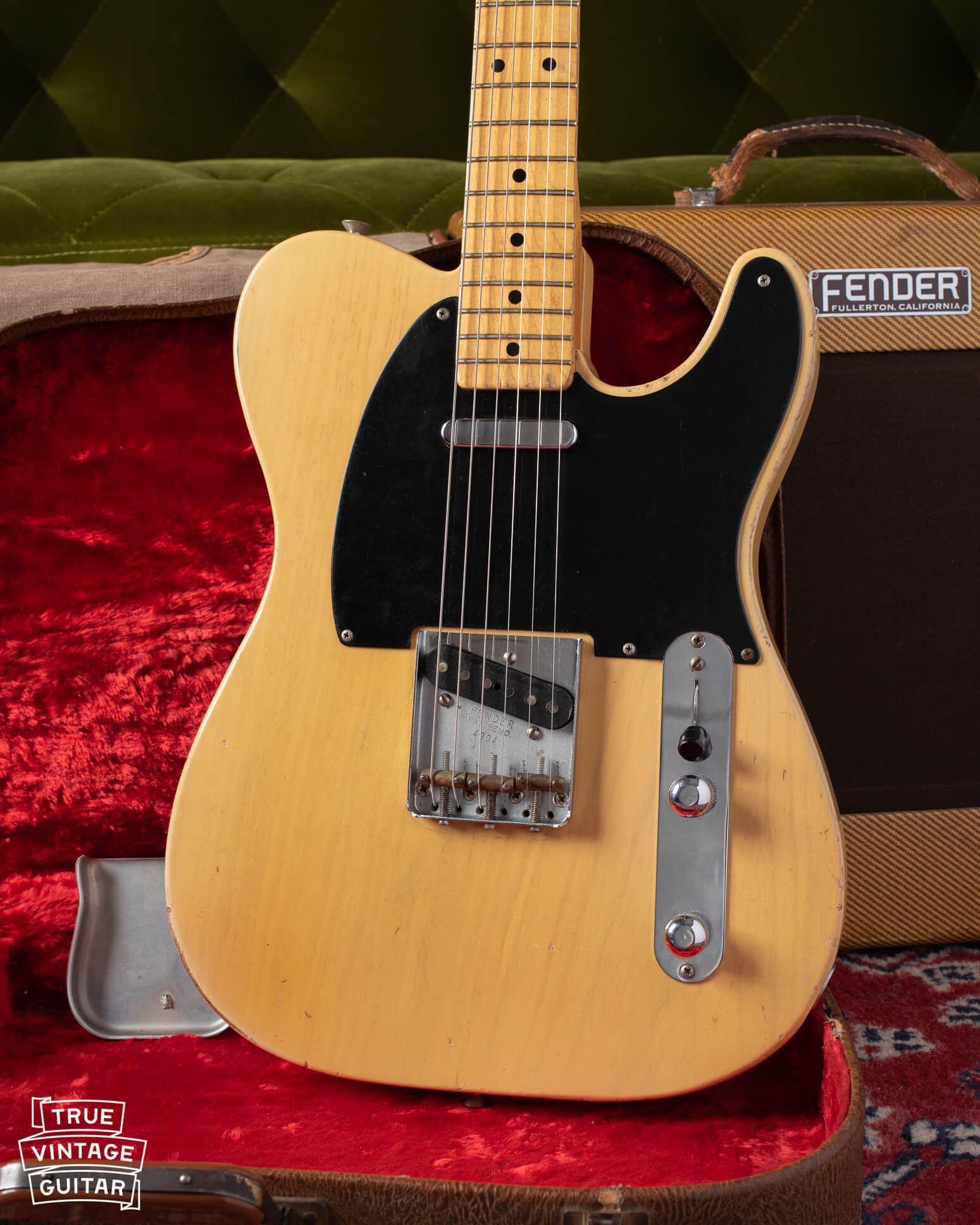This solid center block inside the Gibson ES-335 is one of my favorite Gibson developments from Gibson in the late 1950s. None of the other manufacturers had made a guitar quite like that before. I'm a collector of vintage Gibson ES-335 guitars and am constantly looking for Gibson ES-335 guitars from 1958, 1959, 1960, 1961, 1962, 1963, 1964, and 1965. You can contact me here to sell a Gibson guitar.
It's important to accurately identify the year of manufacture of a Gibson ES-335 in order to determine its value. If you're looking for help with how old is my Gibson ES-335? Check out How to date a Gibson ES-335.
The folks at Gibson didn't think very highly of Leo Fender's Esquire solid body electric guitar introduced at the 1950 National Association of Music Merchants show. It looked rather crude compared to the nicely appointed archtop electric guitars made by Gibson and Epiphone that were popular with the Jazz and Big Band guitar players of the time. The almost instant commercial success of the guitar changed Gibson's mind and enter the market for solid body electric guitars with the Les Paul Model in 1952.

The 1950s saw many innovations in the Les Paul line including the wrap tail bridge in 1953, the Tune-O-Matic bridge in 1954, and eventually the Humbucking Pickup in 1957. The Les Paul line was only moderately successful in the 1950s due in part to the fact that Gibson was, at the time, known for their hollow-body designs with warm tone. Ted McCarty, then president of Gibson, oversaw the development of a new model that took advantage of Gibson's popularity for hollow archtop designs with f style holes but also employed the thin solid body innovations of the time: the ES-335 in 1958.

The ES-335's most important advancement was the solid center block down the thin hollow body that eliminated feedback at high stage volume but also allowed for body resonance and light weight. McCarty loaded the model with all the advancements they were working on in the 1950s: the Tune-O-Matic bridge, the humbucking pickup, and a neck that joined the body at the 19th fret. The design employed two smoothly rounded cutaways on either side of the neck to allow for access all the way to the last fret.
Solid Maple center block inside of a 1961 Gibson ES-335:

First year sales were limited with only about 909 guitar shipped according to currently available shipping records. The ES-335 quickly gained reputation as a versatile new guitar worthy of the finest professional players. The model changed little through 1964 with a Cherry finished being offered from 1960, the neck position markers changed from dots to blocks in 1962, and the body shape changing slightly at the cutaways from more rounded to more pointed in 1963 and 1964. The earlier, more rounded style wings slightly resemble Mickey Mouse ears and collectors often refer to them as such. The 1965 model year saw two more significant changes with the stop tail studs deleted in favor of a trapeze tailpiece and the neck width decreased from 1 11/16" to the skinny 1 9/16".
1964 Gibson ES-335 with Custom Made plaque:

The 1965 and earlier ES-335 guitars with 1 11/16" nut width, often referenced as wide neck 335s, command significantly higher prices (almost double) on the vintage market compared to the late '65 and later trapeze tailpiece guitars. Many players find the nut width to be a bit too skinny for comfort and the trapeze tailpiece to hinder resonance when compared to the stud tailpiece. As a result, many collectors may find a lot of value in a trapeze tailpiece ES-335 at about half the price of a comparable example with stud tailpiece.

Ted McCarty left Gibson in 1966. His time as president of Gibson from 1949 until 1966 is a clear golden age of electric guitar design and production. The ES-335 remained a commercial success and has been in continuous production ever since. We're always looking for vintage Gibson electric guitars including ES-335, ES-345, and ES-355 models. Do you have one you're looking to sell? Reach out to me here at the Sell My Vintage Gibson Guitar page and send a picture of your guitar if possible. I'd love to check it out.



